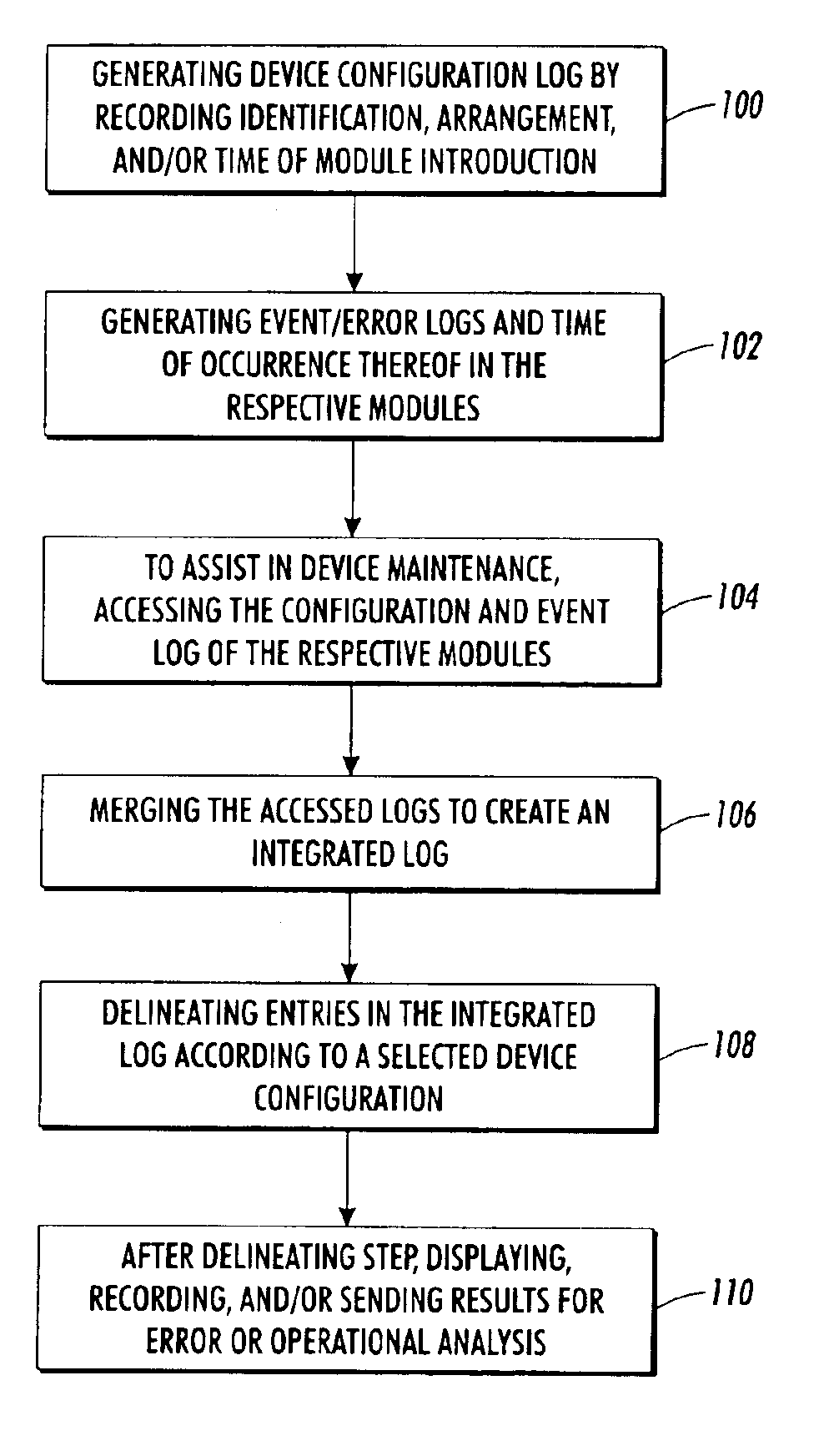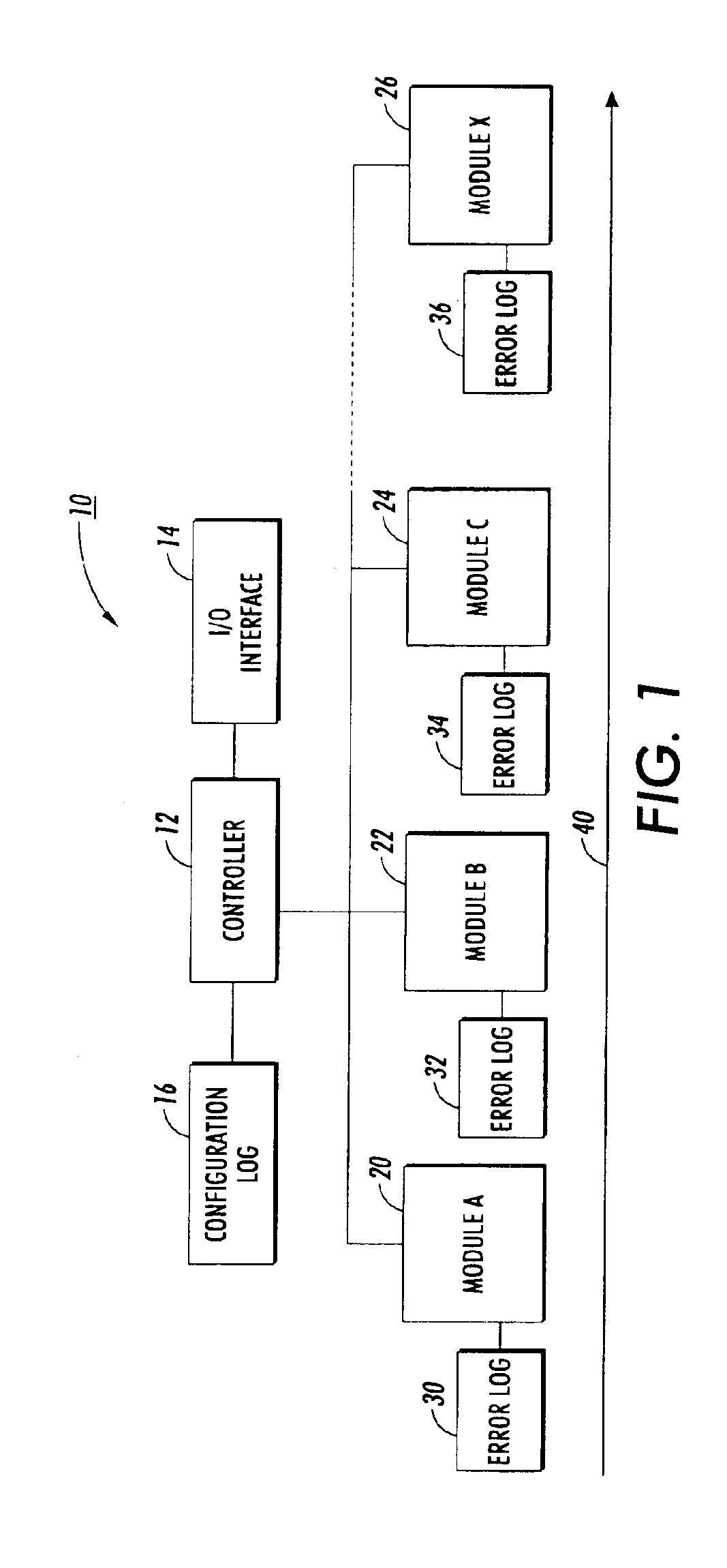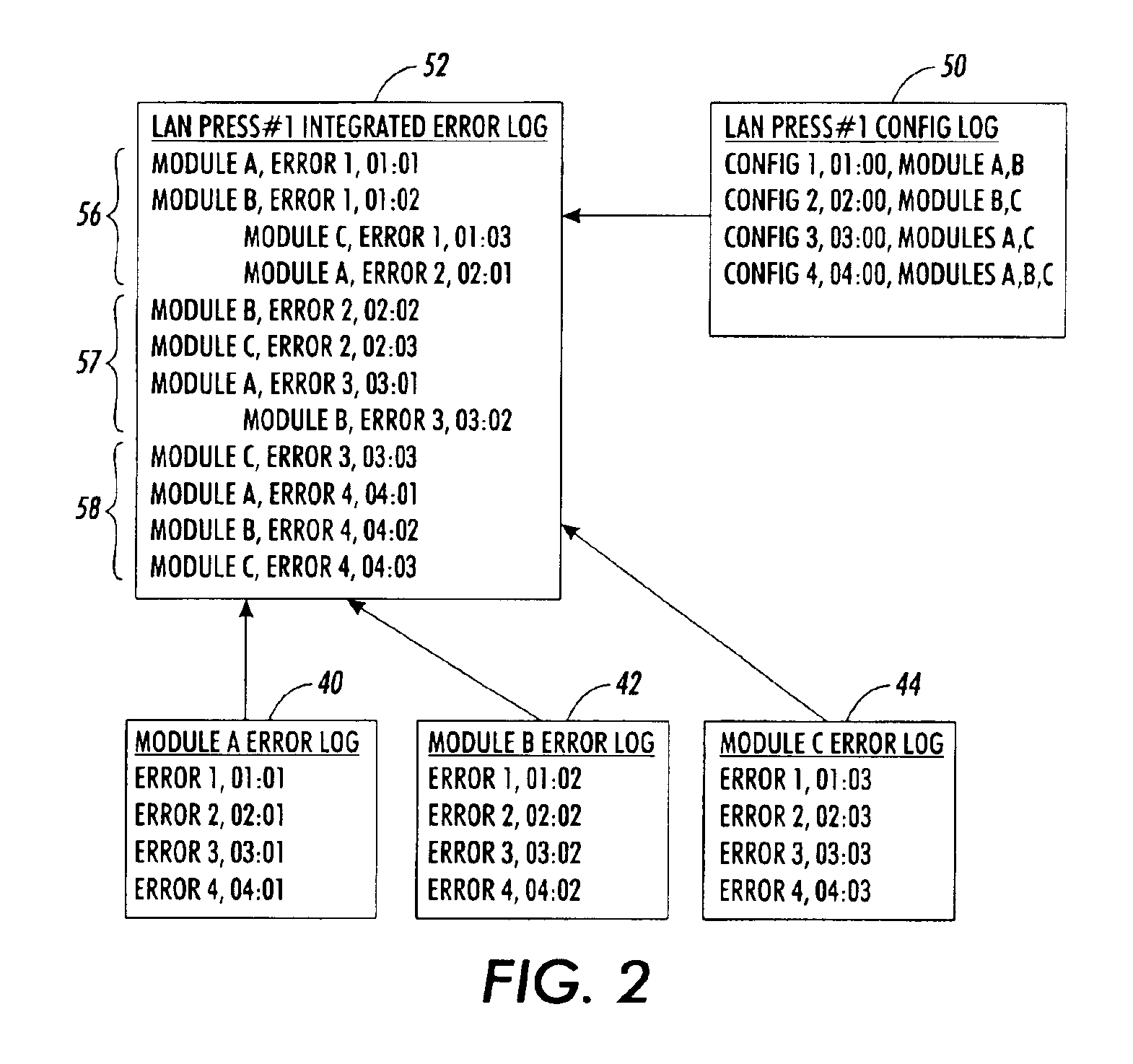Method and apparatus for providing data logging in a modular device
- Summary
- Abstract
- Description
- Claims
- Application Information
AI Technical Summary
Benefits of technology
Problems solved by technology
Method used
Image
Examples
Embodiment Construction
[0014]FIG. 1 conceptually depicts a multi-modular device 10 having a main controller 12, an I / O interface 14, and a plurality of interchangeable modules 20, 22, 24 and 26, designated as Modules A, B, C and x, respectively. Interface 14 receives inputs from or displays output for an operator of device 10. To assist in remote diagnostic, interface 14 may also include a modem that enables a connection with and transfer of information with a remote operations center via a telephone or other network. Each of the modules 20-26 preferably includes an associated error or data log 30, 32, 34, and 36 that detects and records information pertaining to at least one operational characteristic or event of the module to which it is connected. The inventive arrangement preferably enables local and / or remote examination of error and operational information of device 10 to assist in trouble-shooting and maintenance. Although shown attached with an associated module, the error logs may be stored or re...
PUM
 Login to View More
Login to View More Abstract
Description
Claims
Application Information
 Login to View More
Login to View More - R&D
- Intellectual Property
- Life Sciences
- Materials
- Tech Scout
- Unparalleled Data Quality
- Higher Quality Content
- 60% Fewer Hallucinations
Browse by: Latest US Patents, China's latest patents, Technical Efficacy Thesaurus, Application Domain, Technology Topic, Popular Technical Reports.
© 2025 PatSnap. All rights reserved.Legal|Privacy policy|Modern Slavery Act Transparency Statement|Sitemap|About US| Contact US: help@patsnap.com



